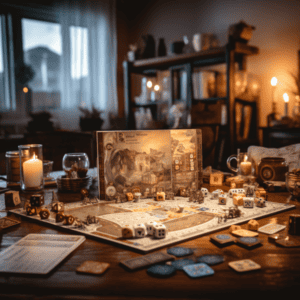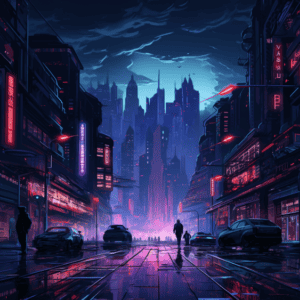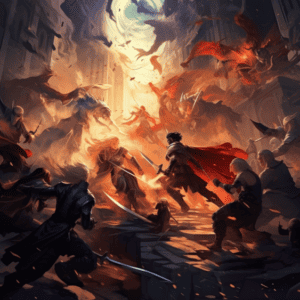
From Pixels To Polygons: Evolution Of JRPG Visuals . As a senior video game journalist, I’ve had the pleasure of experiencing some of the most iconic moments in gaming history. However, one genre that has always held a special place in my heart is Japanese RPGs (JRPGs).
From their colorful characters and intricate storylines to their immersive worlds and addictive gameplay, these games have left an indelible mark on gamers worldwide.
In this article, we’ll take a visual journey through classic JRPGs from pixels to polygons. We’ll explore how these games evolved from 8-bit sprites to fully-realized 3D environments while still retaining their unique charm and magic.
So join me as we delve into the world of JRPGs and discover what makes them so enduringly popular among gamers young and old alike.
A Brief History Of Classic JRPGs
As a senior video game journalist, it’s hard not to feel nostalgic when talking about the classic Japanese role-playing games (JRPGs) of yesteryear. It’s been over 30 years since Square Enix released their first JRPG, and yet these titles still hold an important place in many gamers’ hearts.
In fact, did you know that Chrono Trigger and Phantasy Star were both released within two months of each other back in 1995? Talk about a major year for RPG fans!
Nintendo played a huge role in bringing these iconic series across the Pacific Ocean to North America. With Nintendo’s help, Square was able to release Chrono Trigger on the SNES and later bring it over to the Nintendo DS. Similarly, Sega worked with Nintendo to release Phantasy Star IV on the Genesis console.
These games introduced us to incredible cast of characters that we would grow attached to throughout our journeys – from Ayla and Frog in Chrono Trigger to Rika and Chaz in Phantasy Star IV. Looking back now, it’s clear how much influence these early JRPGs had on modern games like Octopath Traveler or Stardew Valley, but at the time they felt completely original and groundbreaking.
The Aesthetics Of 8-Bit Games

8-bit games hold a special place in the hearts of many gamers. These retro classics from the 80s and early 90s are defined by their pixelated graphics, chiptune soundtracks, and simple but addictive gameplay. Despite being limited by hardware constraints, these games managed to create immersive worlds filled with memorable characters that still resonate with players today.
One of the most iconic examples of an 8-bit game is Phantasy Star for the Sega Master System. The game’s sci-fi setting was unique at the time, and its cast of characters included strong female leads like Alis Landale who paved the way for future heroines in video games.
Another classic 8-bit RPG is Final Fantasy on the Nintendo Entertainment System (NES). This game spawned a massive franchise that is still going strong today thanks to its compelling story and innovative battle system. Even modern JRPGs like Octopath Traveler and Stardew Valley owe a debt to these pioneers of gaming history.
With re-releases on platforms like Nintendo Switch and Nintendo DS, new generations can experience these timeless classics for themselves.
The Evolution To Polygonal Games
As video games continued to evolve, so did their visual presentation. The transition from pixelated graphics to polygonal games was a monumental shift that left players in awe.
Square Japan was at the forefront of this innovation, introducing a new level of depth and detail to their RPGs. Under the guidance of Hironobu Sakaguchi as director, along with talented individuals such as character programmer Nasir Gebelli and visual director Kazuko Shibuya, Square Japan produced some of the most visually stunning games of their time.
Their original game, Final Fantasy VII, marked a turning point in gaming history by showcasing what could be achieved with 3D graphics. Other notable titles like Chrono Trigger and Phantasy Star IV also made significant strides towards polygonal games before it became mainstream.
To emphasize the significance of this evolution to polygonal games, consider these key points:
- Polygonal games allowed for more realistic movements and animations.
- These advancements allowed for greater immersion in virtual worlds.
- Visual storytelling became much more nuanced thanks to improved facial expressions and detailed environments.
- Producers had greater control over camera angles and perspectives during cutscenes.
Square Japan’s dedication to pushing technological boundaries paid off not just commercially but also critically. Polygonal games have become standard across all platforms today – even indie hits like Shovel Knight or Stardew Valley incorporate elements of this style into their design.
In hindsight, we can see how necessary this evolution was for keeping Japanese role-playing games relevant in North America where competition was fierce among Nintendo Switch titles.
Conclusion
As a senior video game journalist, I have seen the evolution of Japanese RPGs from their pixelated beginnings to their current polygonal forms. It is fascinating to see how technology has advanced and how developers have adapted to create more immersive worlds for players.
While some may argue that the shift to polygonal graphics took away from the charm of classic JRPGs, I believe it only enhanced them. The addition of 3D environments allowed for more dynamic gameplay and storytelling elements, while still maintaining the core mechanics that made these games so beloved in the first place.
However, it’s important to remember and appreciate where these games came from. Without the limitations imposed by early technology, we wouldn’t have the rich history of JRPGs that we do today.
So let us continue on this visual journey through gaming’s past and present, appreciating each step along the way.






